He became India’s 40th Grandmaster in the year 2015. Very soon, he started working as a coach with ambitious Indian players and produced stunning results – his first student Raunak Sadhwani went on to become a Grandmaster at the tender age of 13! He trained other Indian talents too, particularly IM Sankalp Gupta and IM Harshit Raja. In 2018, he added yet another feather to his cap when he began working with the Indian Women’s team. And now in 2020, he is all set to release his first-ever book titled Playing the Petroff – A Bulletproof Repertoire with the renowned publisher Quality Chess!
In the following interview, GM Swapnil Dhopade talks to Shubham Kumthekar about his upcoming book, sharing behind-the-scenes stories while also reflecting on the Petroff Defence in general. He further speaks about his experiences with the Indian Women’s team and also narrates how the idea of Chess Pathshala, his chess academy, came to fruition. He rounds up this detailed interview by taking a rapid-fire, wherein he shares the name of a certain cricketer whom he idolizes. Keep reading to know more about one of India’s finest chess coaches!
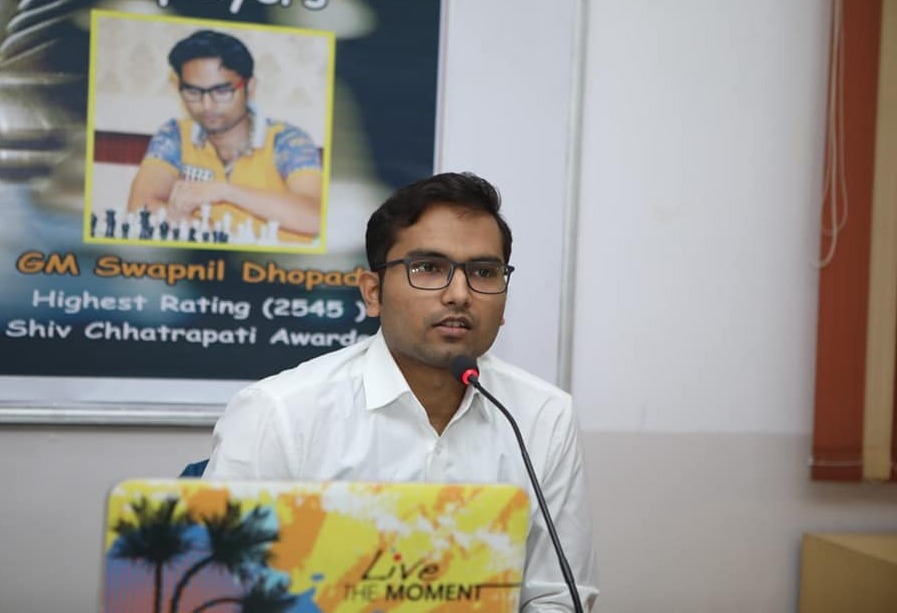
(Source: chesspathshala.in)
Shubham Kumthekar: How did the concept of the Petroff book come into being?
Swapnil Dhopade: I was a part of the Indian women’s team as a second at the 2018 Olympiad which was held in Georgia. The head coach of the team was Jacob Aagard, who was basically managing everything and was taking camps before the event. They had around three camps with Jacob before the Olympiad and I was invited as a second from the third camp onward. I was basically working on the openings with the team. I also accompanied the team to the Olympiad as an opening helper. Somehow, I felt that Jacob kind of liked the opening files which I created, and the team was also quite comfortable with the files. Overall, Jacob was satisfied and happy about the work that I did at the Olympiad.
Also, I have personally known Jacob for quite a while as I am one of his students. I attended camps at his home in Scotland. And after attending the camps, I immediately gave the best performance of my career when I finished joint third in the Isle of Man Open. It was a really nice experience, one that established a bond with Jacob. I also feel that he is fond of Indians. A lot of his students are Indians and he has a lot of connections in India. He likes working with Indian chess players a lot and he believes that we have a lot of potential. In this way, I already had some sort of personal connection with Jacob (before the Olympiad).
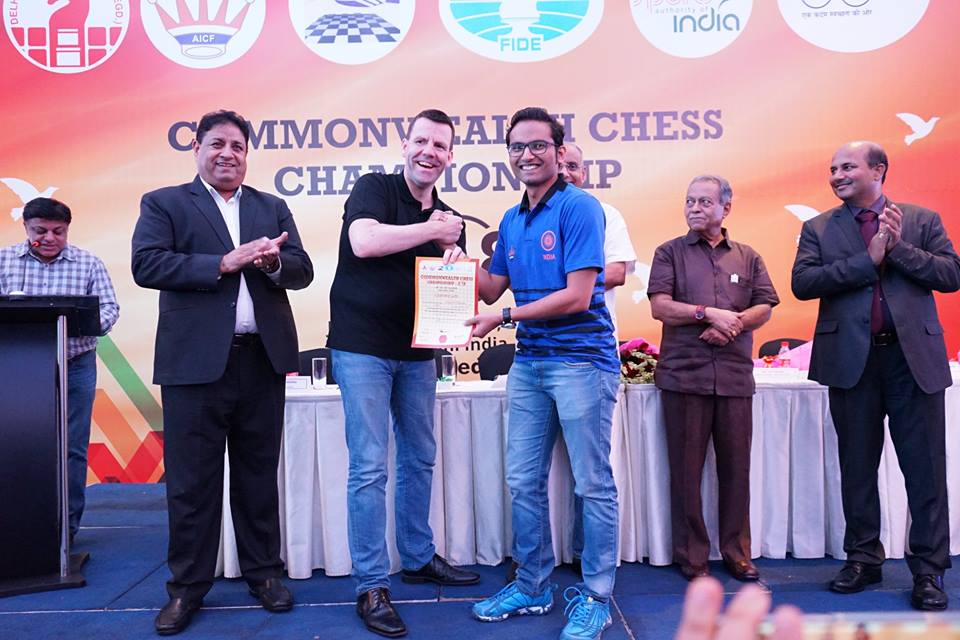
GM Jacob Aagard awarding GM Swapnil Dhopade a prize at one of the Commonwealth Chess Championships.
(Source: chesspathshala.in)
One day, after finishing our work for the team at the Olympiad, we were discussing different issues and aspects of chess improvement, and it was just a casual discussion when I asked him how exactly was Quality Chess doing. Of course, we know that they have been publishing books regularly, and when I was a full-time player, I also referred to a lot of his books, especially the Grandmaster Repertoire series. His books have helped me a lot, particularly his Grandmaster Preparation books on Calculation, Positional Play, and Endgame Play. I was always quite fond of and liked the books published by Quality Chess. I casually asked him if there’s an opportunity for me to be a part of Quality Chess, and he was really happy when I asked about it. His immediate words were, “Yes, why not! It would be really great to have you on our team. It would be great if you could write a book for Quality Chess.” The initial idea that I had on my mind was about writing a book on Caro-Kann as I have been playing the opening since the start of my career. Also when I was working for the Indian women’s team, I was mainly working on Caro-Kann because I had good preparation in the opening. I suggested to Jacob that I could write a book on Caro-Kann. However, GM Lars Schandorff, who had written a volume on Caro-Kann in the Grandmaster Repertoire series before, was supposed to be doing so again. Considering a Caro-Kann book was already on the cards for Quality Chess, I, unfortunately, could not write a book on my favorite opening.
But then Jacob said that writing a book on Petroff would be a good idea because recently, there hadn’t really been a famous book on Petroff or a complete repertoire on Petroff from the black side, and it would be a good idea if I could do so. The Carlsen – Caruana World Championship Match 2018 also had a lot of Petroff games and they ignited a lot of interest in this opening. I agreed that it would be a great idea to write a book on the Petroff, but my only problem was that I had never played a game with the Petroff in my entire career! The subject was completely new to me. But what I had experienced at the Olympiad was that if somehow, I could get into the research mode, I could work on completely new opening variations and try to create a good file in as minimal time as possible. I realized that it could also be a good opportunity for me to learn something about the Petroff. I thought that if I invest some quality time and if I research correctly, it would be a nice idea to write on a subject which is completely new to me. So this is how we agreed on it and I started working on a Petroff repertoire.
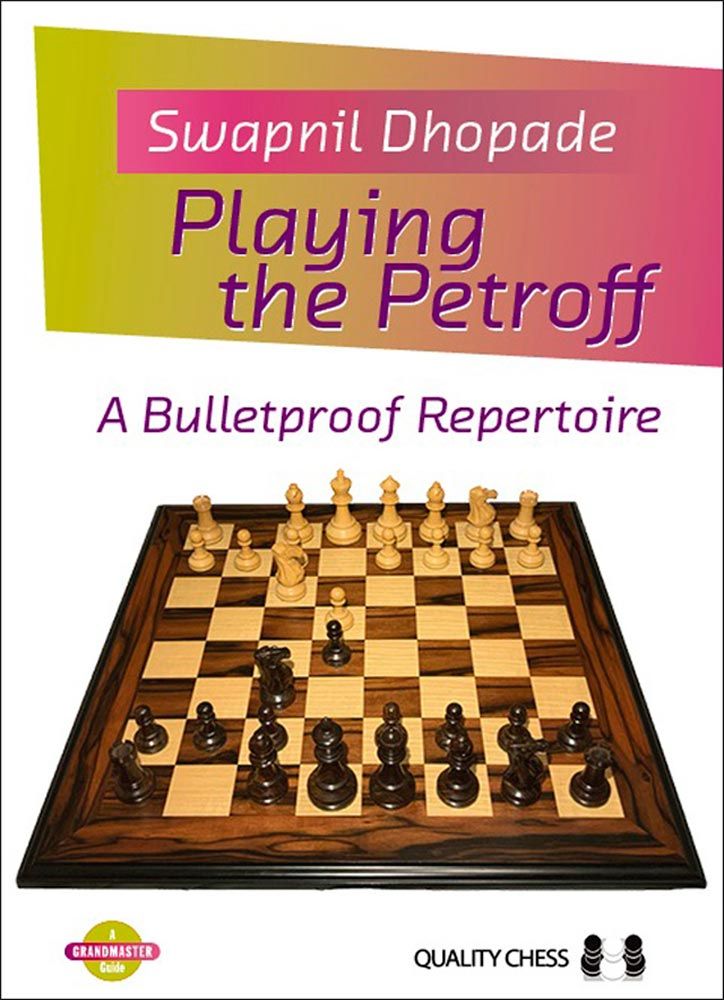
You can find the PDF Sample here.
What were the challenges in writing this book considering Petroff is not your main opening?
Indeed, there were a lot of challenges. If you write a book on an opening which you already know quite well, you would have already played hundreds and hundreds of games in that opening, making the task of writing easier. In my case, it was the Caro-Kann. So if I write something on the Caro-Kann, it would be very easy for me because of the experience I have with this opening. In that case, we already know which lines are critical and which lines we should recommend to the readers. But if you write on something completely new, you have to refer to a lot of books on the subject, do a lot of research, and also play over a lot of games and lines which are trending right now. We have to start researching from scratch, and that is a little tough as well as time-consuming.
There was another challenge. In many positions in the Petroff, the engines show an evaluation of 0.00 (chuckles). In an opening like the Sicilian, the engine may immediately point out some really bad moves as the position is so dynamic in nature. But in the Petroff, the positions are usually kind of equal and very solid after the opening. With that in mind, it was a bit of a challenge to always try and understand what the engine was saying and then suggest moves that would be comfortable to the readers. We basically have to think from a human point-of-view, from a practical point of view. Having said that, it was also quite interesting and a nice learning experience for me.
That brings me to a related question. Were there any books that you particularly found interesting while you were writing this book?
I did try to look for some books (on the Petroff), but I felt that the depth in those books wasn’t particularly great. As such, I had a brief look at some of the books but I felt that it was better to start from scratch and then take it from there. I thought that if I start from scratch, check the old games, check how Petroff developed and how its theory evolved, I will learn a lot more in the process. So practically, I didn’t put a lot of emphasis on the existing books on the Petroff and attached more importance to starting anew.
Let’s say someone is looking to learn the Petroff. In that case, who do you think are the model players to check out?
Right now I think Fabiano Caruana is the best Petroff player around, but there are also a lot of Chinese players like Yu Yangyi and Wei Yi who play the opening. Even Wang Hao plays the Petroff and he has beaten none other than Vishy Anand with it. These Chinese players have been playing Petroff quite regularly and quite successfully. They are the players to be followed alongside Caruana. Of course, Caruana plays all the openings well. He has great preparation in each and every opening, but he particularly plays Petroff quite well. And going into his World Championship match against Carlsen, Petroff was sort of the main weapon for him. To sum it up, the model Petroff players are Fabiano Caruana, Yu Yangyi, Wang Hao, and Wei Yi.
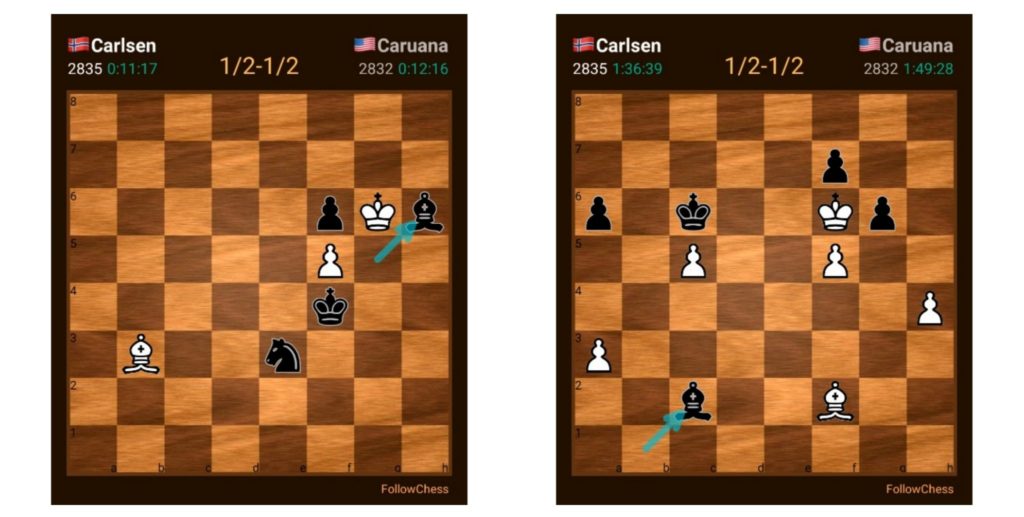
in Games 6 and 11 of the 2018 World Chess Championship
match by using the Petroff Defence.
This reminds me of something. I was watching the broadcast of a recent online event, I forget which one exactly. At some point, one of the commentators mentioned that the way the Chinese players play the Petroff is quite different. They are not looking for some sort of equality but they are looking more for a fight. What do you think about this?
To begin with, you tend to get a very solid position in the Petroff if you know what you are doing. But there are some really interesting and fighting lines as well from the black side. There’s this mainline where White goes for long castle, and one of the challenging lines, if you want to have a real fight as black, is to castle short. So basically, the position that comes out of that variation features opposite side castling and we know that when people castle on the opposite sides, there’s always a fight. There’s always some attack and counter-attack going on. So, there are some lines which are really challenging and fighting and then there are other lines which just peter out to a draw or equality. It is some sort of a mix.
What was your approach to writing this book and who’s the target audience?
First, I myself tried to understand the opening as deeply as possible and tried to figure out which variations are challenging and what’s exactly trending. Then I picked up the lines which I felt will be relatively easier for the audience to learn, to follow, and to remember as well. Because I may give a thousand lines, but if the readers are unable to remember them comfortably, then it is basically of no use. Keeping that in mind, I tried to include lines where the reader will be able to remember stuff quite easily. But of course, there are some lines that contain a lot of dynamism. The moves are so concrete that if you forget a move, the position could become really messy. In such situations, I tried to put a lot of comments explaining the important moves that are somewhat difficult to remember and those that don’t come easily to our intuition. I tried to highlight the ideas as deeply as possible with the correct comments. If you remember the comments, then the chances of remembering the moves are also quite high. My main focus was on suggesting some good solid lines, but even in the lines which are a bit challenging and dynamic in nature, I added a lot of comments so that the readers could remember them for a long time.
Regarding the target audience, I feel it is quite broad. The reason is that I start explaining the variations, the ideas, and the plans right from the beginning of the variations. At the same time, there are also a lot of novelties in the book which can be useful even for Grandmasters. Therefore, I believe the book can help a wide range of players.
This is your first ever book, right?
Yes, this is my first book. Before this book, I had only written two articles for Modern Chess on Prophylaxis. But in the book format, this is definitely my first one.
Would we see you writing more books? If yes, which topics do you think would you like to write on?
Well, I have a lot of topics to write on! There are so many topics in the middle game, there are so many psychological aspects to chess. For example, I have written articles on my own blog on pattern recognition and time management which were later republished on Chessbase India.
Alongside psychological aspects, I could write about improvement and other practical stuff. I could also write on positional chess as I collect a lot of instructive examples on different topics on a daily basis. These are of course used in training with my students, but these examples can also find their way into a book. Apart from writing books, I also have many other plans like making video courses for my website. That’s just one of the many other things on my agenda. Let’s see!
When Sam Shankland released his first book, we had interviewed him and he had mentioned that he would like to write a second book. And later, he indeed ended up writing a second volume. I hope that you get to write your second book as you have so much to share!
Indeed, I am looking forward to it!
Moving on to something different. A few weeks back, you posted a certain picture on Instagram. You had James Clear’s bestselling book Atomic Habits next to you and we had exchanged a few comments on that picture. GM Stany had also recommended it in one of his articles for Quality Chess, and that’s how I personally ended up picking the book. That brings me to the next question: Which non-chess books do you think can chess players use for their own benefit? And in what way?
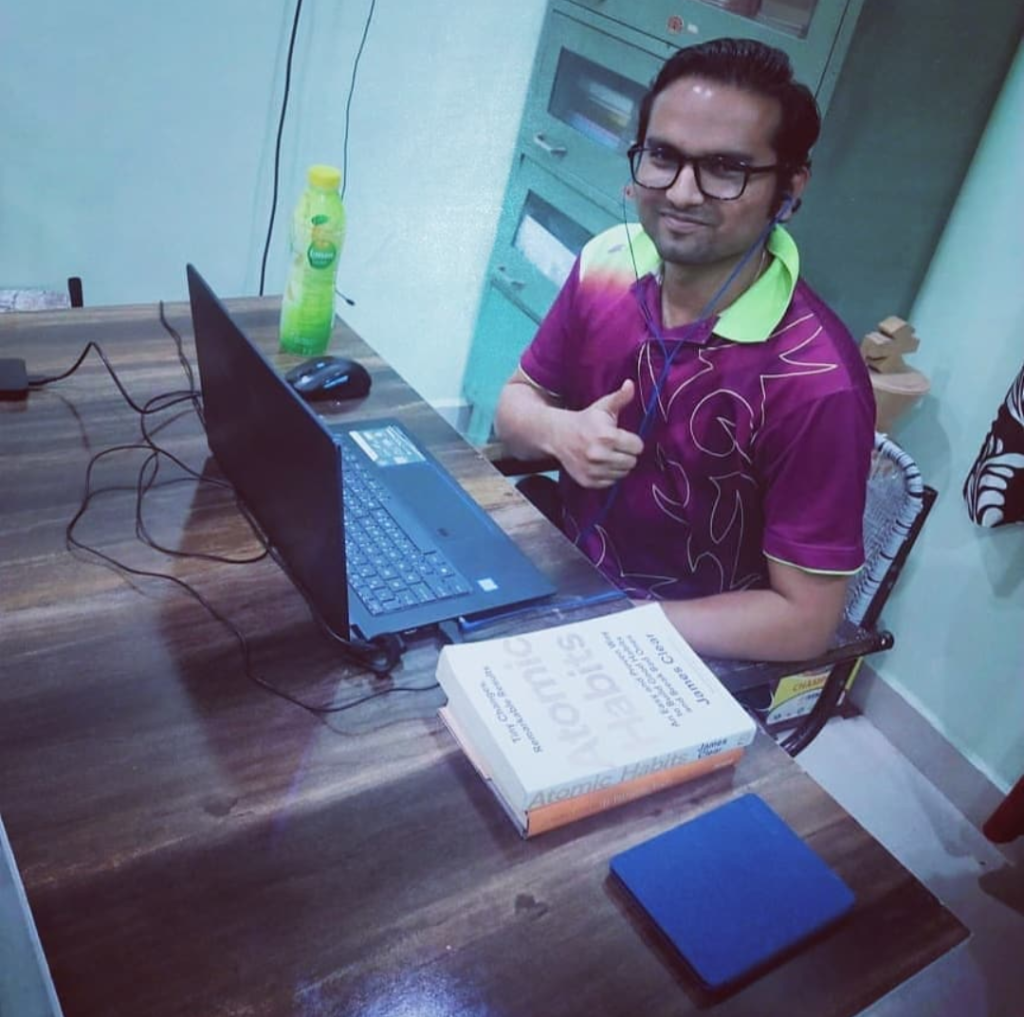
Notice the book next to him!
(From Swapnil Dhopade’s Instagram)
Well, there are a lot of books on psychology and habits. For example, the Atomic Habits book is really nice. There are a lot of self-help books that we can relate to chess regarding how one should work, how one can stay motivated, etc. But it’s important to consider how much you are able to apply from those books. It’s very exciting to order a book or to download a book on Amazon Kindle, but it’s also extremely important to be able to use all the things that you learned in the book and implement them for your own benefit. So I think instead of reading a lot of books, you can just pick one book that you like, for example, Atomic Habits, and then try to implement the things given therein and apply those to your day to day life – how one can use the lessons from the book in their chess schedule, how one can try to cultivate new habits which will help one in their chess career and training, and so on. So to begin with, I think the emphasis should be more on implementation than on ordering new books and just reading them. Because if you don’t really put all the things that you learn into action, they become wasteful.
Now let’s talk about Atomic Habits. One thing I learned from the book is that our phones are a distraction of sorts. As such, many times when working on chess, I try to keep my phone elsewhere, hopefully not in the same room or at least with the internet switched off. Of course, this is mentioned in a lot of books and a lot of articles as it helps us to reach our peak productivity by focussing as much as possible. But apart from this, the author James Clear also says that habits are usually connected to one another. For example, if you go to your room, you may end up checking your phone. Or if you’re standing in a queue and you don’t have anything to do, you automatically reach for your phone and you start checking the notifications. Regarding this, the author suggests in the book that you should try to figure out unproductive habits that you want to change, and those that are happening subconsciously. For example, someone may be addicted to playing games or just surfing online without any conscious effort. In that case, you may open your laptop for chess but instead of working on chess, you may end up surfing on the web for quite some time. In such cases, you can just switch off your Wi-Fi before opening the laptop and then work on chess.
Also, there are some players who repeatedly tend to get up from the board, and that may end up affecting their concentration when a critical moment arrives in the game. But if they sit for more time at the board and just relax, it is quite possible that they will be able to concentrate more deeply at the critical moments.
Basically, one thing leads to the other. Our habits are somehow always connected, and it is very important for us to figure out how we end up doing unproductive activities or things that we don’t really want to. This way, we can work on the habits that hinder us in our chess progress.
Let us talk about your experiences as a trainer. You worked with the Indian women’s team at the 2019 World Women’s Team Championship and earlier at the 2018 Batumi Olympiad. What was your experience like?
During the Batumi Olympiad, my job was mainly concerned with opening preparation. I had to work on the variations that players were going to play the next day and to try and make the opening files as clean as possible. A file shouldn’t be too messy, otherwise, the player may get confused. I used to add comments at important moments so that the player could understand and grasp the matter as quickly as possible and she could play it well in her game. In the process, I learned a lot about how to handle engines and which engines were stronger. But then I went to the World Women’s Team Championship, where I was the head coach of the team. Here, I learned a lot about the psychological aspects – how to exactly motivate the players, how to keep them in the best shape, how to create an environment where they could give their best in the games, what should be the schedule, etc. Summing it up, I learned different things at these two events – at the Olympiad, it was mainly about opening preparation, and at World Teams, it was mainly about the psychological part.

(Source: chesspathshala.in)
When you worked at these events, what did you make of certain teams that keep winning the titles time and again? For example, you have the Chinese and Georgian teams in women’s events. What do you think is special about such teams?
I feel that their training setup is really interesting, especially in the case of the Chinese teams. They have a dedicated place to train for the national team, a dedicated place where the top players in the country can assemble and train before a tournament. Such a dedicated setup is very essential in my opinion. Whenever there is some tournament coming up and the players want to train intensively and stay completely focused, then it’s better to have a setup like this on a national level. That could prove to be really great.
The Indian team has a lot of potential and with proper training, even we can finish in the top three places or become champions. So, potential-wise, I don’t think there is any difference but it’s more about how you train. Also, I feel that the Chinese players mainly train in groups. This is something that the Indian players need to cultivate. I always tell my students to work in groups by making a group of three or four players of the same strength, for example, and then work on a particular topic or a particular variation. This is something, that I feel, is absent in the Indian chess circles. Now, the top players are moving towards working together, of course. But I think this that needs to be encouraged even more along with having a dedicated center for the top players to work regularly. Such things are quite important, and I feel this is what makes the Chinese team so strong.
Let us talk about your chess academy – Chess Pathshala. How did this project come into being and what are the services that you offer as a trainer?
For the past four years or so, I have been mainly teaching one-on-one. I try to take on board only selected students. Of course, it also depends on how much time I have on my hand. My first student was Raunak Sadhwani, who went on to become a Grandmaster very quickly. And when your first student becomes a GM so quickly, it of course encourages you to keep on coaching and help students achieve their title. As such, I have worked with a lot of students over the past four years. But then, I also used to get a lot of emails from players, let’s say in the range of 1000 to 2000. I did not have much time remaining for these players and I was unable to train them. It was practically impossible to work with each and every player who wanted guidance from me. That is how I arrived at this thought that maybe, I should create a team of coaches, I should train these coaches, I should explain to them how exactly they should go about teaching students, and that I should also create material for the coaching sessions. I feel there are two really important things when it comes to coaching. One thing is the coach himself, of course, and the second thing is the material that he uses to teach the students. If the material is not so good then the benefit may not be so great. Hence, I selected a few coaches and I trained them. I explained to them how exactly to teach different aspects of chess – positional, endgame, etc and also psychological aspects like how to deal with the students, how to motivate them, etc. I also personally made the material that the coaches will use to teach the students in the online sessions. That way, the two most important things in coaching were taken care of. And by training this team of coaches, I basically aimed at helping the players below the 2000 level, whom I cannot personally attend. This was the main reason behind founding the Chess Pathshaala Online Academy. But then, I have also started expanding offline. For example, I have established an academy in Amravati, my home city, and also in two cities nearby namely Yavatmal and Vani. The latter is a very small rural place.

What are your future plans going ahead? Would you be playing more, would you be more into coaching, do you plan to do some other things in chess…
I am almost gravitating towards full-time coaching as I enjoy it a lot. When I started coaching, I used to do it in a 50-50 manner. I used to focus on my own practice but I also used to train Raunak. But then, Raunak started doing quite well and he became a GM. On a personal level, I enjoyed the process of training him. I felt that coaching is something I really enjoy and I love helping students achieve their dreams. As a result, I am more into full-time coaching right now. Of course, I will be playing tournaments when I feel like playing and when I feel that I am a bit rusty. But the focus will definitely be on full-time coaching.
A lot of my focus is also on creating online video courses and also on developing my offline academy, on training my students in Amravati. But for the moment, the latter has taken a backseat due to the Corona situation. However, I am working on the online aspects and my video courses will be released very soon on my website. I will be making courses on different subjects, for instance on Openings, where my first course will be on the Caro-Kann! (chuckles) Of course, other important topics like Endgames, Tactics, Positional Play, etc will also be covered.
What is your message to chess improvers?
I feel a lot of budding talents right now are always trying to keep two options in their career. For instance, if chess fails, then they plan to switch to academics or something else in their life. In this respect, I feel it’s really important that they focus all their energy on one thing for a few years rather than having two options. Because when you have two options open, there is a high probability that you will switch on to something else. But if you deeply believe that you enjoy chess, then make sure that you work 100 percent on it. That will increase your probability of making a successful career in chess.
Blitzkrieg
If you were not a chess player, then what would you be?
Maybe a saint! I read a lot of spiritual books and I am really drawn to spirituality.
One chess book and one non-chess book that you recommend….
Atomic Habits in the non-chess category. For chess, I would say (pauses to think) Grandmaster Preparation – Calculation by Jacob Aagard.
Half an hour before a game you are generally found doing…
Meditating.
Who is your non-chess role model?
I have a lot of sports heroes. But if I had to go with one, I would go with MS Dhoni. There are a lot of qualities in him which I really admire but on the top of the list is the way he handles situations calmly.
– – – – – – – –
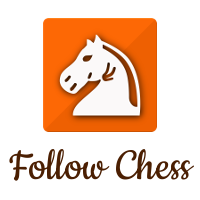
I liked the depth of the interview. The flow with which Swapnil Sir spoke covering a lot of aspects in his replies made me read this in one go ! Kudos to shubham for asking really nice questions. Thank you !
Good chess lecture
Good chess PDFs from this site
Inspirational and informative. Specifically the journey to chess world is fantastic. Nice questions asked. Awaiting more such journey. Thanks